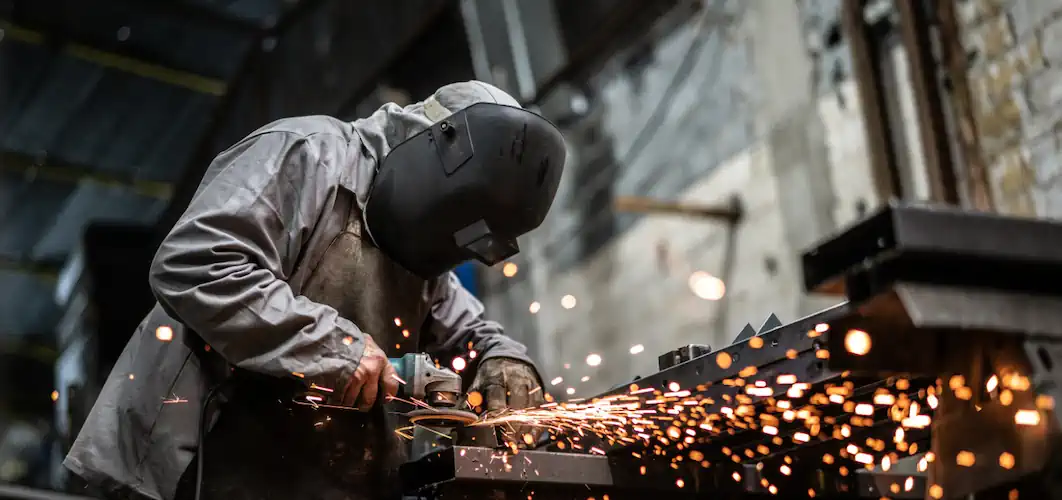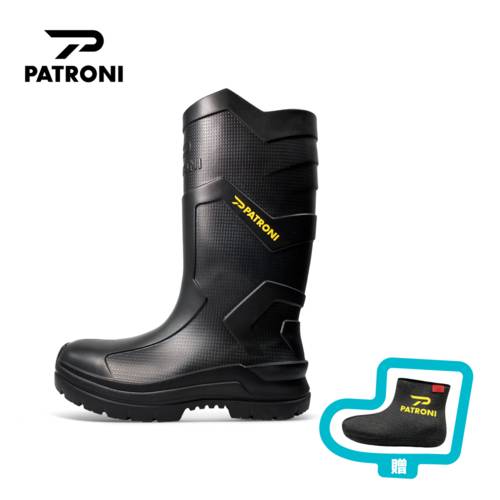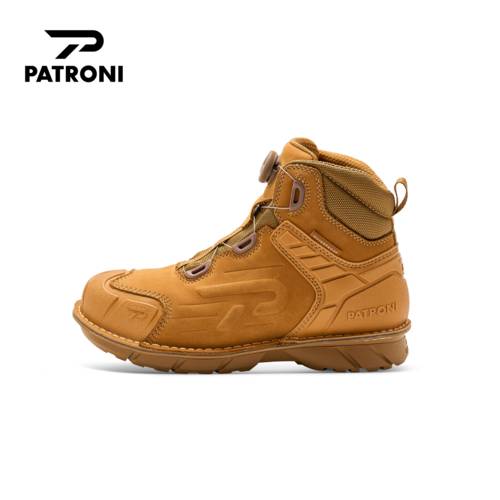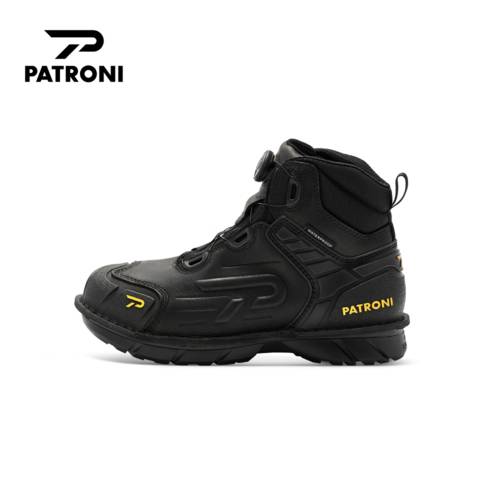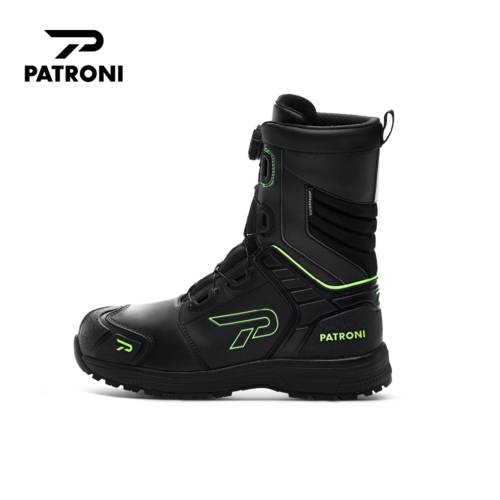THE POWER OF A COOLING VEST FOR OUTDOOR WORKERS
Working outdoors can be challenging, especially during hot summer months when temperatures soar. The scorching sun and high levels of humidity can take a toll on outdoor workers, leading to reduced productivity and increased risks of heat-related illnesses. However, there is a revolutionary solution that can help combat these issues and keep outdoor workers cool and productive – cooling vests.
If you're an outdoor worker looking to beat the heat and boost your performance, it's time to unleash the power of cooling vests. Say goodbye to the sweltering heat and stay cool, comfortable, and productive all day long.

Importance Of Staying Cool For Outdoor Workers
Outdoor workers are exposed to extreme weather conditions, including high temperatures, direct sunlight, and humidity. These conditions can lead to heat-related illnesses such as heat stroke, heat exhaustion, and heat cramps. Heat-related diseases not only impact the health and well-being of workers but also result in decreased productivity and increased safety risks.
When the body is exposed to high temperatures, it tries to cool itself down by sweating. However, in hot and humid conditions, sweat evaporates more slowly, making it difficult for the body to cool down effectively. This can lead to overheating, dehydration, and fatigue, ultimately affecting the worker's ability to perform their job efficiently.
Staying cool is essential for construction workers or any outdoor workers to maintain optimal performance and ensure their safety. By wearing cooling vests, workers can regulate their body temperature, prevent overheating, and stay comfortable throughout the day. Cooling vests provide a reliable and effective solution to combat the challenges of working in hot environments.

HOW COOLING VESTS WORK
Cooling vests are innovative garments designed to regulate body temperature and provide relief from heat stress. These vests incorporate advanced cooling technologies that help keep the body cool by absorbing and dissipating heat. By wearing a cooling vest, outdoor workers can stay comfortable and focused, even in the hottest conditions.
Not only do cooling vests provide immediate relief, but they also have long-term benefits for outdoor workers. By preventing overheating and maintaining a stable core body temperature, these vests can enhance overall productivity, reduce fatigue, and improve safety on the job.
Cooling vests work on the principle of taking away heat from the body and creating a cooling effect to lower its temperature. The method the vest carries heat out of the body vary by technology, but they all have the same goal. The choice of cooling vest technology depends on preferences and specific job requirements.
Benefits Of A Cooling Vest For Outdoor Workers
Using cooling vests can have numerous benefits for outdoor workers. Let's go through a few key advantages.
1. Temperature Regulation
Cooling vests help maintain a stable core body temperature, preventing overheating and heat-related illnesses. By regulating body temperature, these vests enable outdoor workers to perform their tasks without the discomfort and risks associated with working under stressful conditions and hot environments.
2. Increased Productivity
When workers are comfortable and cool, they can focus better on their tasks and perform at their best. By reducing the impact of heat stress, cooling vests enhance productivity and efficiency, leading to improved work outcomes.
3. Reduced Fatigue
Heat can cause fatigue and exhaustion, impacting the physical and mental well-being of workers. Cooling vests alleviate the strain on the body caused by heat, reducing fatigue and allowing workers to sustain their energy levels throughout the day.
4. Enhanced Safety
Heat-related illnesses can pose serious risks to workers' health and safety. By wearing cooling vests, outdoor workers can minimize these risks and ensure a safer working environment. Cooling vests can also contribute to a decrease in the number of workplace accidents and injuries caused by heat-induced fatigue or dizziness.
5. Improved Comfort
Working in extreme heat can be uncomfortable and distressing. Cooling vests provide instant relief and comfort, allowing workers to concentrate on their tasks without distractions or discomfort. The adjustable features of cooling vests enable workers to customize the level of cooling according to their preferences and needs.
TYPES OF COOLING VESTS AVAILABLE
Cooling vests come in various designs and styles to cater to different needs and preferences. Here are the common types of cooling vests available on the market:

1. Evaporative Cooling Vest
These vests use the power of evaporation to cool the body. The lightweight cooling vest is made of breathable fabrics that absorb water or sweat. When worn, the water or sweat evaporates, creating a cooling effect. Evaporative vests are easy to use and require water replenishment to maintain their cooling properties.
Evaporative cooling vests can be used in any industry since they're one of the most inexpensive options. They can be useful for those working in offshore environments and mining shafts but might provide little relief for those under the direct sunlight like construction workers.
2. Ice Pack Vest
Ice pack vests are innovative and practical garments that are designed to provide relief and comfort in hot weather or during physical activity. These vests are equipped with special pockets or compartments that can hold ice packs or ice water, which help to lower body temperature and reduce the risk of heat-related illnesses. This is a good option for those working in confined spaces like mine shafts because it can help the body cool naturally.
3. Phase Change Cooling Vest
These vests utilize advanced phase change materials (PCMs) to provide cooling. PCMs absorb and release heat at specific temperatures, ensuring a constant cooling effect. Phase change cooling vests are durable and provide long-lasting cooling without the need for additional water or refrigeration. Some are even manufactured thin enough to be worn under PPEs, providing better comfort and flexibility.
PCMs are designed to be worn beneath protective attire. It's often used in various industries including firefighting, maritime, mining, and blast furnace work. These vests are simple to don, have minimal flammability, and are lightweight in design.
4. Hybrid Cooling Vest
These vests combine the benefits of both evaporative cooling and phase change cooling technologies. They feature pockets filled with PCMs while also incorporating evaporative cooling fabrics. This hybrid design offers maximum cooling efficiency and flexibility.
Hybrid cooling vests offer extended hours of cooling comfort and shielding against the strains of elevated temperatures, whether indoors or outdoors. They are well-suited for a range of demanding occupations, including construction, welding, mining, metalworking, oil rig operations, and industrial worksites.
5. Battery-Powered Cooling Vest
These vests are equipped with built-in cooling systems powered by rechargeable batteries. They use fans or pumps to circulate cooled air throughout the vest, providing continuous cooling. Battery-powered cooling vests are ideal for individuals who require a high level of cooling or work in extreme heat conditions.
Battery-operated air-blowing vests are useful for construction workers in hot countries because they constantly circulate air for heat relief.
The choice of cooling vest depends on individual preferences, job requirements, and the level of cooling needed. Consider factors such as comfort, durability, ease of use, and maintenance when selecting a cooling vest.

CHOOSING A COOLING VEST: FACTORS TO CONSIDER
When choosing a cooling vest, several factors should be taken into consideration to ensure it meets the specific needs and requirements of the job. Consider the following factors.
1. Comfort and Fit
The cooling vest should fit well and be comfortable to wear throughout the workday. Look for adjustable straps and customizable features to ensure a proper fit. The vest should allow freedom of movement without restricting the worker's range of motion.
2. Cooling Efficiency
Consider the cooling technology used in the vest and its effectiveness in regulating body temperature. Evaluate the cooling duration and the ability to provide consistent cooling throughout the day.
Here's a guide on the charging time and effect duration of different types of cooling vests:
Evaporative cooling vests:
They can last from 4 to 70 hours, depending on the temperature and humidity. Reactivation requires only a few minutes in cold water or refrigerator. Others can be reactivated by refilling them with water.Phase change cooling vests:
They can last from 3 to 12 hours, depending on the brand and ambient temperature. Charging time can be from 5 minutes to 12 hours, depending on the temperature of the environment.Ice pack vests:
They can last for 45 minutes to 5 hours, with a charging time of 30 to 45 minutes.
3. Durability and Quality
Outdoor work can be demanding, so the cooling vest should be durable and able to withstand rough conditions. Look for vests made from high-quality materials that are resistant to wear and tear like nylon, polyester, neoprene, spandex, or polyurethane plastic.
4. Ease of Use and Maintenance
The cooling vest should be easy to put on, take off, and adjust as needed. Consider the ease of cleaning and maintaining the vest, especially if it requires water replenishment or special care.
5. Safety Features
Look for cooling vests that meet safety standards and regulations. Consider additional safety features such as reflective strips or high-visibility colors for workers who require visibility on the job.
Some of the safety standards observed for cooling vests are:
ASTM F2371-16:
This test quantifies and compares the cooling provided by different personal cooling systems (PCS) worn with a common base ensemble.ANSI/ISEA 107-2020:
This is the criteria for ensuring that safety apparel have high-visibility for safety. It covers everything from design requirements to performance testing and product labeling.
6. Cost and Value
Evaluate the cost of the cooling vest and its value in terms of the benefits it provides. Cooling vests cost USD 50 to USD 400+, depending on the product's brand, material, and features.
Consider also factors such as the expected lifespan of the vest and the long-term cost-effectiveness when choosing a suitable product.
By considering these factors, outdoor workers can make an informed decision and choose a cooling vest that best suits their needs and requirements.
TIPS FOR USING COOLING VESTS EFFECTIVELY
To maximize the benefits of cooling vests, here are some tips for effective use:
1. Pre-Cooling:
Before heading out to work, pre-cool the cooling vest by placing it or the detachable part, as stated in the manual, in a refrigerator or cooler. Some types of vests have containers that can be refilled with water for recharging. Overall, this process will ensure the vest starts with a low temperature and provides instant relief when worn.
2. Hydration:
While cooling vests can help regulate body temperature, it is still crucial to stay hydrated. Drink water at regular intervals throughout the day to make up for all the fluids lost via sweat.
3. Layering:
Consider layering the cooling vest with other garments to enhance its effectiveness. For example, wearing a moisture-wicking shirt underneath the cooling vest can help keep the skin dry and maximize evaporative cooling.
4. Maintenance:
Follow the manufacturer's instructions for cleaning and maintenance to ensure the cooling vest remains in good condition. Regularly check for any signs of wear or damage, and replace the vest if necessary.
5. Heat Relief Zones:
Focus on cooling specific areas of the body that generate the most heat, such as the back, chest, and neck. Targeting these areas with cooling packs or specialized cooling technologies can provide maximum relief.
By following these tips, outdoor workers can optimize the performance and effectiveness of their cooling vests, ensuring a comfortable and productive work experience.
FINAL THOUGHTS ON THE POWER OF A COOLING VEST FOR OUTDOOR WORKERS
Working outdoors in hot conditions can be physically and mentally demanding. Heat stress poses significant risks to outdoor workers, affecting their health, well-being, and productivity. Cooling vests provide a practical and effective solution to combat these challenges, enabling workers to stay cool, comfortable, and focused on their tasks.
By wearing cooling vests, outdoor workers can regulate their body temperature, prevent overheating, and reduce the risks of heat-related illnesses. The immediate relief provided by cooling vests enhances worker comfort and well-being, leading to increased productivity and job satisfaction. Moreover, cooling vests contribute to a safer working environment by minimizing the risks associated with heat stress.
When choosing a cooling vest, consider factors such as comfort, cooling efficiency, durability, and ease of use. By following tips for effective use and maintenance, outdoor workers can optimize the benefits of cooling vests and enjoy a productive work experience.
Investing in cooling vests is a proactive approach to prioritize worker safety, comfort, and well-being. By taking advantage of the power of cooling vests, outdoor workers can beat the heat and perform at their best, even in the hottest conditions.





